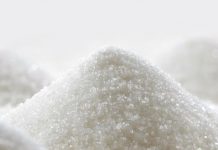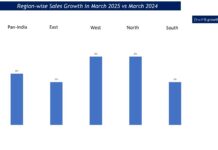FAO’s preliminary forecasts for the global sugar market in 2021/22 (October/September) points to a likely second consecutive season of a tight supply-demand balance. Although world production is forecast to rebound after three years of decline, it is nevertheless expected to fall short of global consumption. As a result, global sugar inventories are anticipated to decline in 2021/22.
The forecast for world sugar production in 2021/22 stands at 173.7 million tonnes, up 2.2 percent from the reduced level in 2020/21. The upturn is largely based on expectations of production recoveries in the European Union, the Russian Federation and Thailand. Prospects are also favourable in India, while in Brazil, the world’s largest producer, output is forecast to decline for the second consecutive season in 2021/22.
Global sugar consumption is set to rebound for a second successive season in 2021/22, growing by 1.9 percent following the COVID-19-related contraction in 2019/20. The foreseen increase is underpinned by the rapid growth prospects for the global economy. Two countries, in particular, are expected to drive up global sugar consumption, India – the world’s largest sugar consumer – and China. Growth is also foreseen across Africa and South America.
The early forecast for world sugar trade in 2021/22 is pegged at 60.5 million tonnes, slightly down from the estimated volume for 2020/21. Foreseen lower exports by Brazil and India, compared with their record sales in 2020/21, will likely outweigh an anticipated recovery in shipments from Thailand – the world’s second largest sugar. By contrast, the continuation of high sugar prices in international markets, as well as the rising freight rates, could curb import demand from Asia. This is expected to more than offset predicted higher purchases by the European Union.
International sugar prices have been overall fluctuating but on an upward trend for more than a year, and in October they were more than 40 percent above their levels a year earlier. Price increases were underpinned by concerns over reduced output in Brazil amidst stronger global demand for sugar. Higher ethanol prices in Brazil lent additional support to international sugar prices, as they encouraged greater use of sugar cane for the production of ethanol.











